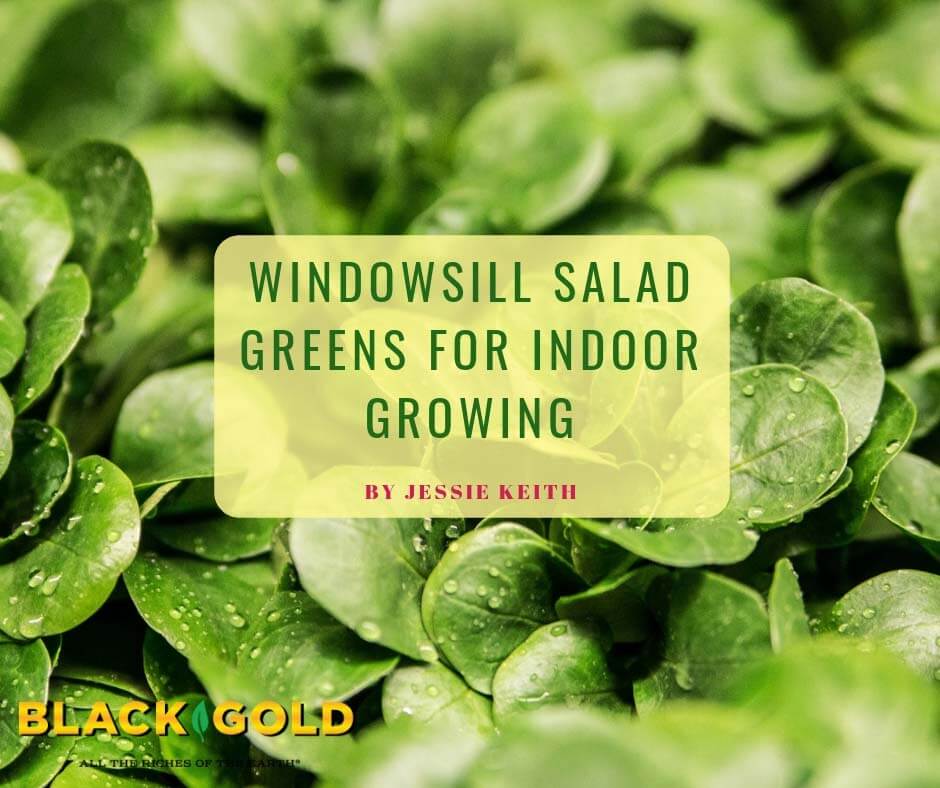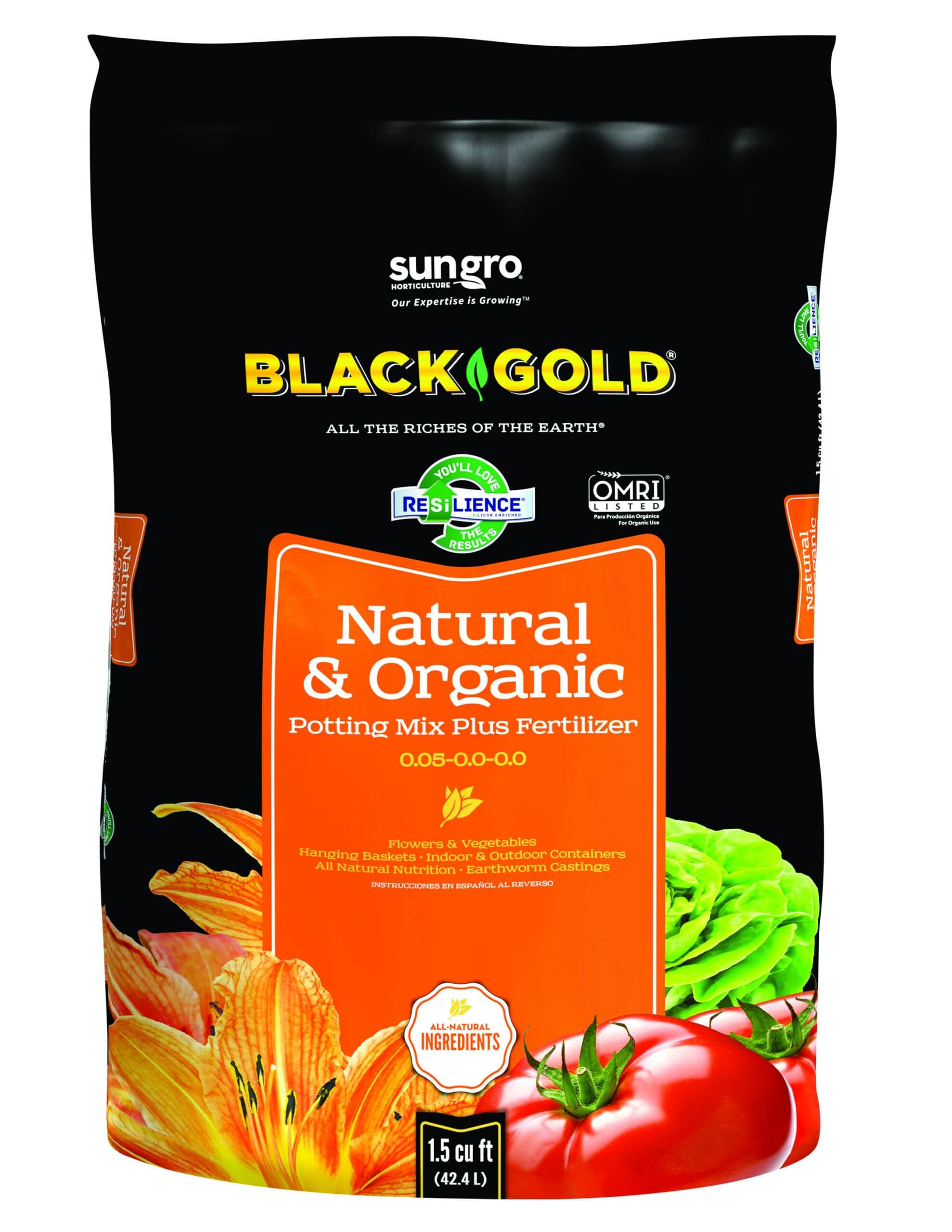
Windowsill greens, such as small lettuces and micro-greens, are fast-growing and gratifying. Growing them indoors is a piece of cake, as long as you have good sunlight, quality soil, the right watering regime, and some gardening know-how. Start with the right greens, master some of the cultural basics, and you’ll be eating fresh salad through even the coldest winter months.
Growing Windowsill Greens
Planter troughs or window boxes can be purchased in a variety of sizes and are best for growing windowsill greens. Adequate pot and soil drainage is a must for success. Black Gold Natural & Organic Potting Mix is a great mix choice. It provides superior moisture retention, excellent drainage, and is specially formulated with a controlled release fertilizer that feeds plants for up to six months. Just be sure to fill the pot to a depth that allows at least 2” of headspace at the top for watering and planting.
Planters should be placed in as sunny a location as possible. Supplemental light can be provided with the use of broad-spectrum grow lights, but natural light is best. When watering, provide just enough water to wet the soil—allowing the mix to dry slightly between. Once plants are actively growing, the need for water will increase. Just be sure to avoid wet soil, which can rot roots and encourage soil-borne pests and pathogens, such as shore flies and fungus gnats. (Click here to learn how to rid pots of fungus gnats.)

Seeds can be directly sown on the soil’s surface or seedlings planted. The seeds of many greens require light to germinate, so surface-sow seed for best results. This means gently sowing the seeds along the soil’s surface and keeping them lightly moist. Once they have germinated, thin seedlings to around 2 to 3 inches apart. This is a little closer than outdoor-grown greens, but denser plantings yield more greens indoors.
Finally, be sure you choose the right crops for indoor growing. Here is a sampling of the types of salad greens you might consider:
Micro Lettuce
Mixed Salanova baby lettuces (55 days from seed) are a great, fast choice for indoor growers. They form dense, small heads that are sweet and crunchy. The mix offers a variety of purple- and green-leaved selections. Baby Leaf Mix is another great choice. Rather than heads, this mix offers cut-and-come-again looseleaf lettuces that produce edible greens in just 28-35 days from seed.

Baby Kale
Looseleaf kales germinate fast, grow quickly, and can be clipped back regularly for home salads. There are several varieties to choose from—‘Red Russian’ and ‘Toscano’ being two of the best. Both are mild and produce edible leaves in just a few short weeks.
Baby Chard
Just about any chard can be grown inside. All are tender and can be harvested young. Most growers opt for colorful varieties because they are high in antioxidants and look pretty in salads. Bright Lights Mix and ‘Ruby Red’ are two festive chards that always taste great when young.
Mizuna
One of the fastest greens for growing is mizuna. Popular in Japanese cooking, its tasty leaves have a mild, spicy flavor and look feathery and pretty in salads. Purple mizuna is a popular choice that will begin to produce edible leaves in just 21 days.
 Mustard Greens
Mustard Greens
The easy-to-grow micro mustard green ‘Green Wave’ is so easy and delicious that you will wonder why you didn’t start growing your own greens sooner. It produces harvestable microgreens just two weeks after germination. Grow plants a little longer to harvest larger leaves.
These are just a few of many salad greens for indoor growing. Gardeners new to indoor growing may want to try one or two greens, like lettuce and kale, before experimenting with other types. One good success will get you hooked.

